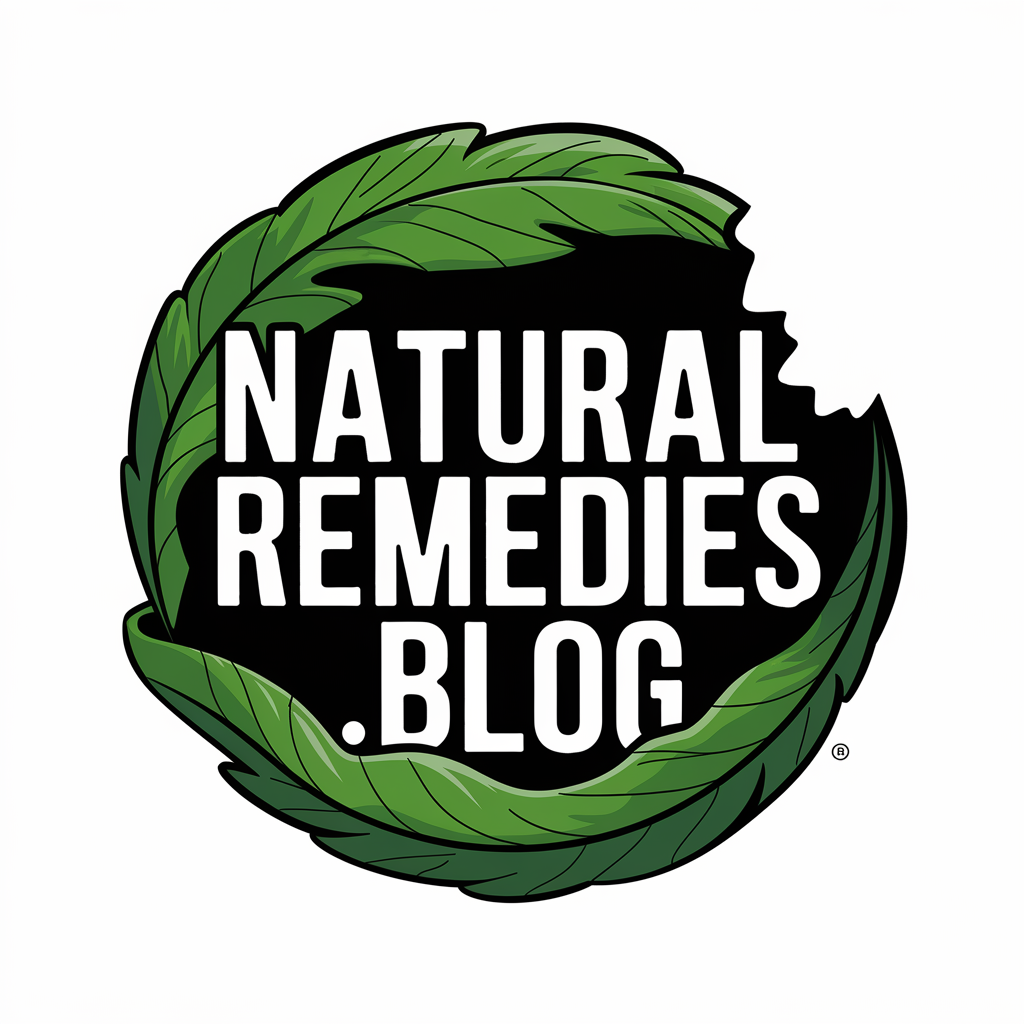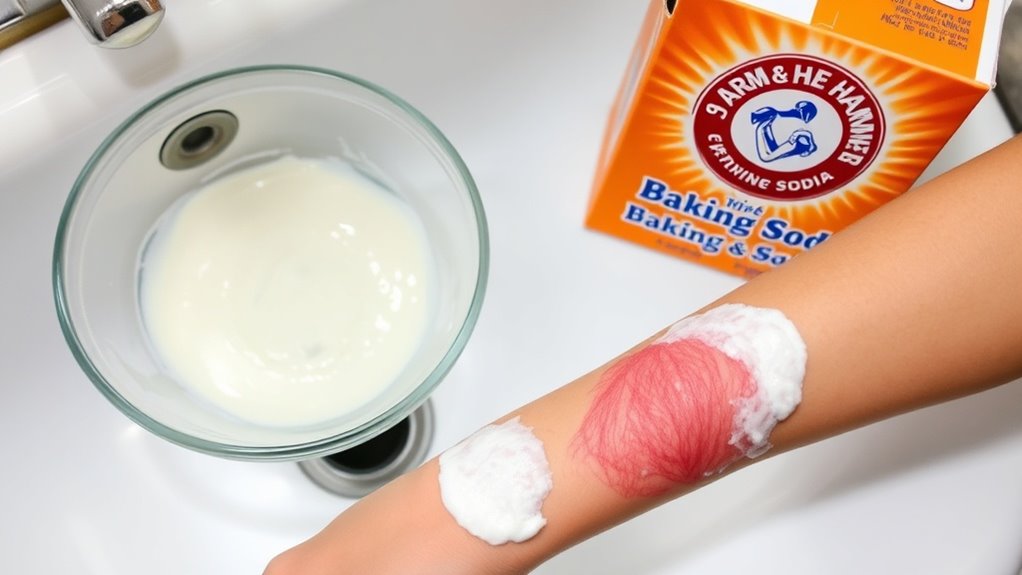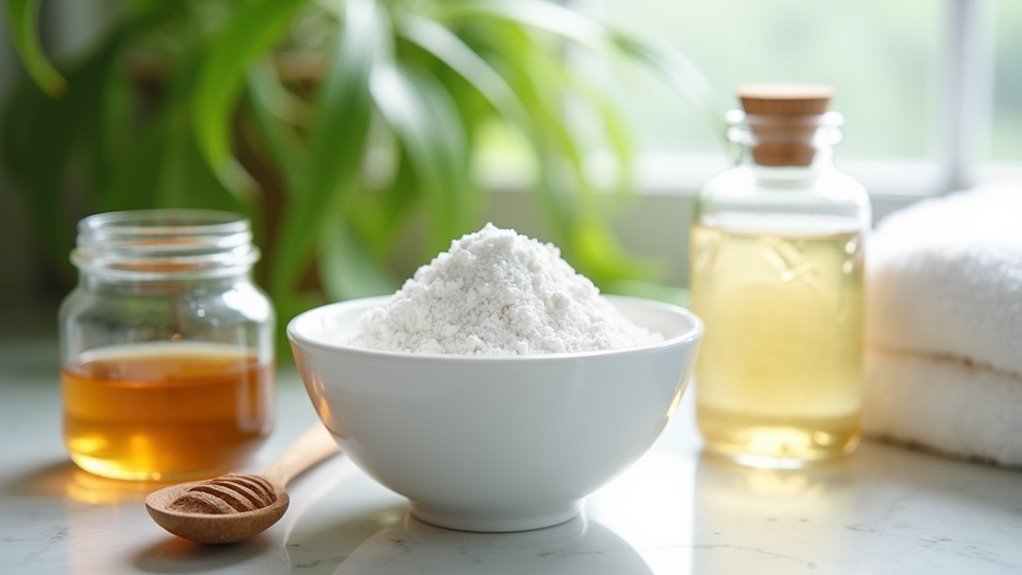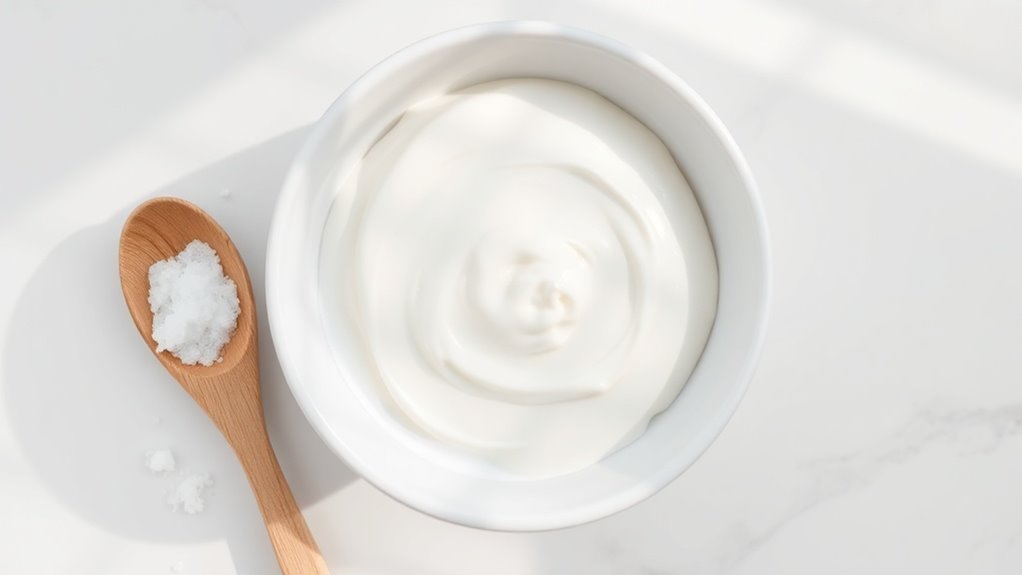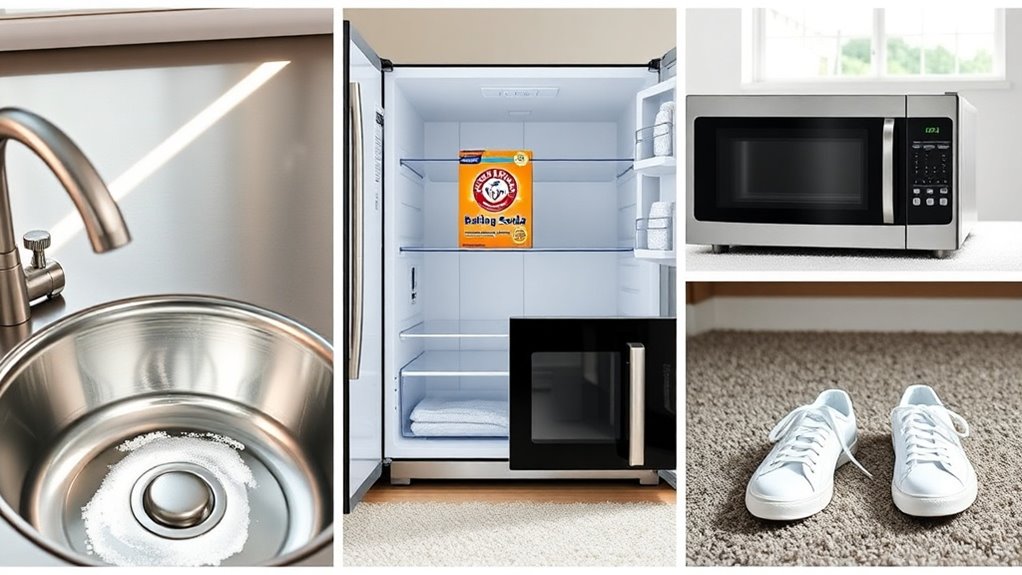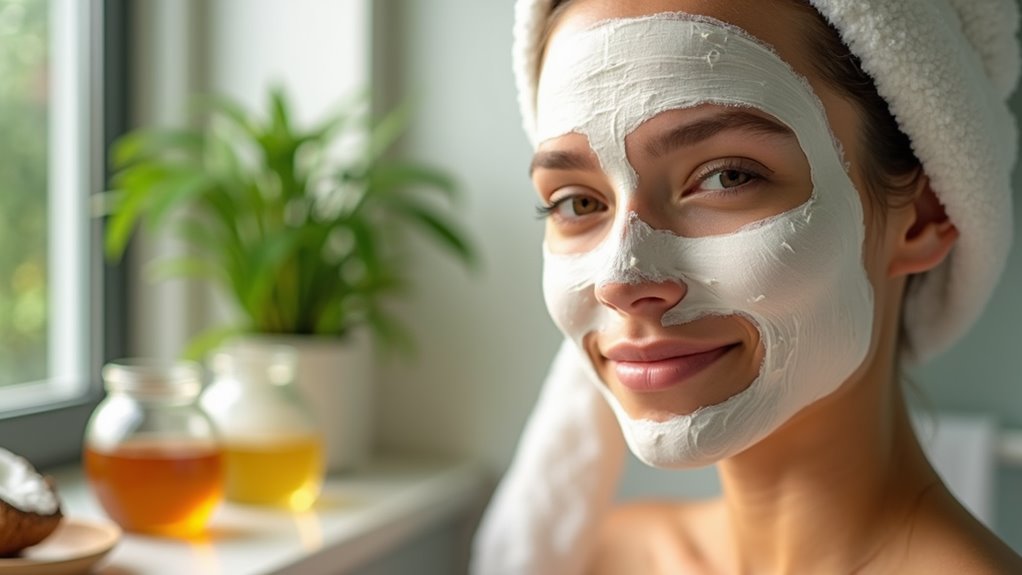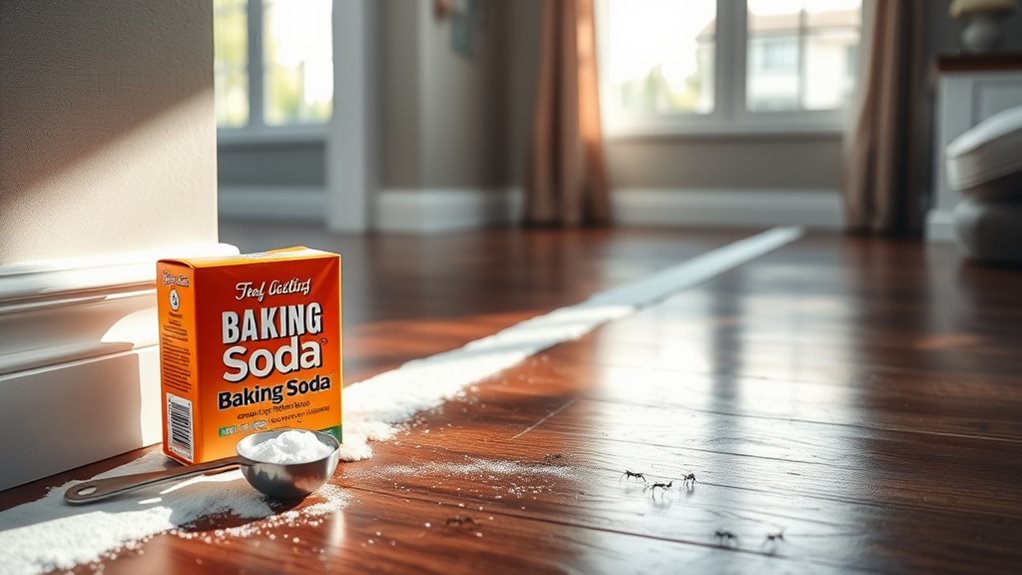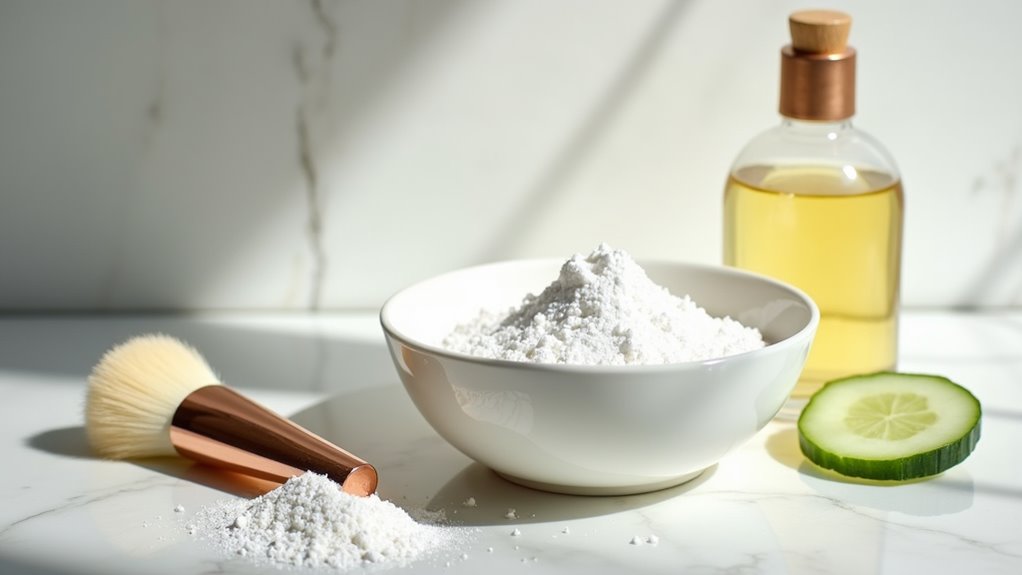Why I Turn to Baking Soda for Skin Flare-Ups
My Personal Journey With Skin Sensitivities
After years of struggling with chronic skin sensitivities, I discovered that many conventional treatments weren’t providing lasting relief.
My dermatologist had prescribed various medications, but the side effects often outweighed the benefits. Through extensive research and self-experimentation, I found that natural remedies, particularly baking soda face masks, offered promising results. Clinical studies suggested that baking soda’s pH-balancing properties could help calm irritated skin. While skeptical at first, I began incorporating this simple ingredient into my skincare routine, documenting my skin’s response and gradually refining the application method for optimal results. Additionally, baking soda acts as a natural exfoliant, effectively removing dead skin cells and unclogging pores.
The Science Behind Baking Soda’s Calming Properties
When you apply baking soda to inflamed skin, its pH-balancing properties help restore your skin’s natural acid mantle to a normalized state of around 5.5, promoting optimal healing conditions.
The compound’s inherent anti-inflammatory action works by inhibiting the production of inflammatory markers and reducing the body’s inflammatory response at the cellular level.
Your skin also benefits from baking soda’s ability to create an alkaline environment that discourages harmful bacterial proliferation while maintaining the growth of beneficial flora. Additionally, it acts as a natural exfoliant, helping to remove dead skin cells and reveal a fresher, healthier complexion underneath.
Ph Balance and Healing
The alkaline nature of baking soda plays a crucial role in its skin-calming properties. When you apply it topically, it helps neutralize acidic conditions that often trigger inflammation and discomfort.
Your skin’s natural pH typically ranges from 4.5 to 6.5, and disruptions to this balance can cause flare-ups. Baking soda’s pH of 9.0 can help restore equilibrium when your skin becomes too acidic. It’ll reduce the growth of harmful bacteria that thrive in acidic environments while promoting healing.
However, you’ll need to dilute it properly, as its high alkalinity can irritate sensitive skin if used at full strength.
Anti-Inflammatory Action at Work
Research has shown that baking soda’s anti-inflammatory properties stem from its interaction with specialized immune cells called macrophages. When you apply a baking soda solution to inflamed skin, it helps reduce the production of inflammatory molecules by signaling these cells to decrease their inflammatory response.
Your skin’s surface contains acid-sensing proteins that detect pH changes. When baking soda interacts with these proteins, it triggers a cascade of cellular events that dampen inflammation.
This process helps calm redness, itching, and swelling by modulating your body’s immune response at the molecular level, making it an effective remedy for various skin irritations.
Neutralizing Bacterial Growth
Beyond its anti-inflammatory effects, baking soda creates an alkaline environment that inhibits bacterial proliferation on your skin’s surface.
When you mix baking soda with water, it forms a solution with a pH between 8 and 9, making it difficult for many harmful bacteria to thrive.
The antibacterial action isn’t just theoretical – research shows that sodium bicarbonate disrupts bacterial cell membranes and interferes with their metabolic processes.
You’ll find this particularly beneficial if you’re dealing with acne or other bacterial-related skin conditions, as the solution helps neutralize the microorganisms that can worsen inflammation and irritation.
Key Benefits for Irritated Skin
Baking soda’s alkaline properties make it an effective remedy for various skin irritations, offering both anti-inflammatory and antiseptic benefits.
You’ll find it particularly useful for calming itchy rashes, soothing sunburns, and reducing redness from minor reactions. Its pH-balancing capabilities help normalize your skin’s acid mantle, while its gentle exfoliating action removes dead cells that can trap bacteria. When you’re dealing with bug bites or hives, baking soda’s anti-inflammatory properties can provide quick relief.
Additionally, its natural antibacterial properties help prevent further irritation and promote a healthier complexion, making it an excellent choice for sensitive skin applications. It’s especially effective when mixed with a small amount of water to create a paste that you can apply directly to affected areas.
How to Create a Simple Baking Soda Face Mask
Taking advantage of baking soda’s skin-calming properties, you can create an effective face mask at home with minimal ingredients. This simple treatment helps neutralize skin pH and reduce inflammation during flare-ups, but be aware that long-term use can lead to increased sensitivity.
-
Mix 2 tablespoons of pure baking soda with 1 tablespoon of distilled water until you achieve a smooth paste.
-
Cleanse your face thoroughly and pat dry with a clean towel.
-
Apply the mixture evenly across affected areas using gentle circular motions.
-
Leave on for 5-10 minutes, then rinse thoroughly with lukewarm water.
Always perform a patch test before full application to ensure skin compatibility.
Best Practices for Application and Treatment
Following proper application techniques ensures optimal results and minimizes potential skin irritation when using baking soda treatments.
Start by patch-testing on a small area of skin for 24 hours. Only apply the treatment to clean, dry skin, and don’t leave it on for more than 5 minutes.
Use gentle, circular motions when applying, and avoid the eye area and any open wounds.
If you’re experiencing stinging or redness, rinse immediately with cool water.
Don’t use baking soda treatments more than twice per week, and always follow with a moisturizer.
Store any unused mixture in an airtight container and discard after 24 hours. Additionally, keep in mind that baking soda’s mild abrasive properties can help gently exfoliate the skin during application.
Precautions and Skin Patch Testing
Before applying baking soda to inflamed skin areas, you’ll need to perform a patch test on a small, quarter-sized area of healthy skin and monitor for any adverse reactions over 24 hours.
It’s essential to dilute baking soda with water to create a mild paste, as direct application of the powder can be too harsh for sensitive or compromised skin.
If you experience redness, itching, burning, or increased irritation during the patch test, discontinue use immediately and consult your healthcare provider.
Test Small Area First
To ensure your skin won’t react adversely to baking soda treatments, it’s essential to perform a patch test on a small area first. Select an inconspicuous spot on your inner forearm or behind your ear to minimize visible reactions if sensitivity occurs.
-
Mix a small amount of baking soda with water to create a thin paste.
-
Apply the mixture to a quarter-sized area of skin.
-
Leave the paste on for 5-10 minutes.
-
Monitor the test area for 24 hours for signs of redness, itching, or irritation.
If you experience any negative reactions, discontinue use and consult your healthcare provider.
Monitor for Adverse Reactions
Ever-vigilant monitoring remains crucial when applying baking soda treatments to your skin, as adverse reactions can develop even after successful patch testing.
Watch for signs of irritation, including redness, itching, burning, or increased inflammation. If you notice any adverse reactions, discontinue use immediately and rinse the area thoroughly with cool water.
Some individuals may experience delayed sensitivity, so continue monitoring your skin for 24-48 hours after each application.
Don’t ignore mild discomfort, as it can signal the onset of more serious reactions. If symptoms persist or worsen, consult your healthcare provider, especially if you have underlying skin conditions.
Dilute Before Skin Contact
When applying baking soda to your skin, proper dilution is essential to prevent chemical burns and adverse reactions.
To safely use baking soda as a skin treatment, follow these dilution guidelines:
- Mix 1-2 tablespoons of baking soda with enough water to form a thin, spreadable paste.
- Test the pH using litmus paper – aim for a slightly alkaline solution around 8.0.
- Perform a patch test on a small area of skin and wait 24 hours for any reactions.
- Don’t exceed a 15-minute application time, even with properly diluted solutions.
Always rinse thoroughly with cool water after treatment.
Alternative Uses for Skin Care
Beyond its traditional role in treating skin flare-ups, baking soda offers several alternative skincare applications supported by clinical research.
You can use it as a gentle exfoliant by creating a paste with water to remove dead skin cells and unclog pores. It’s effective as a natural deodorant when applied to underarms, as it helps neutralize odor-causing bacteria.
You’ll find it useful as a clarifying scalp treatment to remove product buildup, and it can help balance your skin’s pH levels when added to bath water.
As a foot soak, it helps soften calluses and relieves athlete’s foot symptoms.
Combining With Other Natural Ingredients
Three primary natural ingredients enhance baking soda’s skin-soothing properties when properly combined.
You’ll find these pairings particularly effective for addressing various skin concerns while maintaining the gentle nature of your treatment.
-
Mix with raw honey to create an antimicrobial paste that helps reduce inflammation and redness.
-
Combine with coconut oil for additional moisturizing benefits while balancing your skin’s pH levels.
-
Blend with fresh lemon juice to create a natural exfoliant that brightens skin tone.
-
Add pure aloe vera gel to soothe burns and calm irritated skin patches.
Always perform a patch test before applying any new combination to your skin.
Tips for Long-Term Skin Management
Although baking soda offers immediate relief for skin flare-ups, maintaining long-term skin health requires a consistent, multi-faceted approach.
You’ll need to monitor your skin’s pH levels and maintain a balanced skincare routine. Track your flare-up triggers, including stress, diet, and environmental factors. Keep a detailed log of which treatments work best for your specific condition.
While using baking soda for acute symptoms, incorporate preventive measures like proper hydration, sun protection, and gentle cleansers. Don’t rely solely on spot treatments – focus on building your skin’s natural barrier through proper nutrition and consistent moisturizing.
